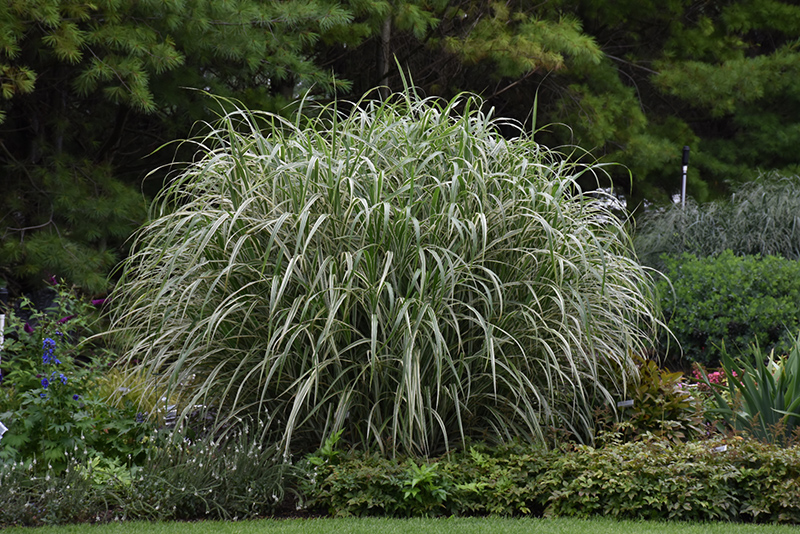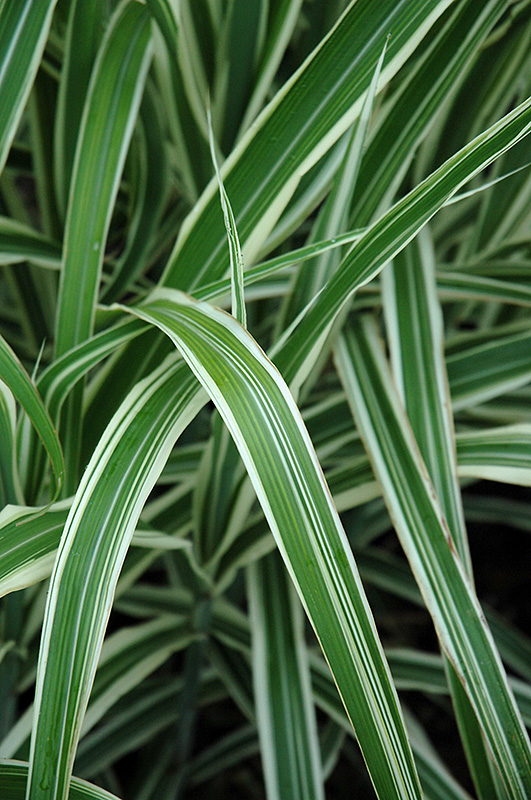Plant Library
Cosmopolitan Maiden Grass
Miscanthus sinensis 'Cosmopolitan'
Height: 7 feet
Spread: 4 feet
Sunlight:
![]()
![]()
Hardiness Zone: 4b
Other Names: Japanese Silver Grass
Description:
This variety has wide green foliage with a white edge and white stripes; an upright cascading habit that is quite symmetrical; copper plumes rise above in fall over tan foliage and produce silvery-white seeds; great winter interest
Ornamental Features
Cosmopolitan Maiden Grass features bold plumes of coppery-bronze flowers rising above the foliage in early fall. Its attractive grassy leaves are green in color with showy white variegation. The foliage often turns tan in fall. The white seed heads are carried on showy plumes displayed in abundance from early fall to late winter.
Landscape Attributes
Cosmopolitan Maiden Grass is an herbaceous perennial grass with an upright spreading habit of growth. Its medium texture blends into the garden, but can always be balanced by a couple of finer or coarser plants for an effective composition.
This plant will require occasional maintenance and upkeep, and is best cleaned up in early spring before it resumes active growth for the season. It has no significant negative characteristics.
Cosmopolitan Maiden Grass is recommended for the following landscape applications;
- Vertical Accent
- Mass Planting
- Hedges/Screening
- General Garden Use
- Groundcover
Planting & Growing
Cosmopolitan Maiden Grass will grow to be about 6 feet tall at maturity, with a spread of 4 feet. It tends to be leggy, with a typical clearance of 1 foot from the ground, and should be underplanted with lower-growing perennials. It grows at a medium rate, and under ideal conditions can be expected to live for approximately 20 years. As an herbaceous perennial, this plant will usually die back to the crown each winter, and will regrow from the base each spring. Be careful not to disturb the crown in late winter when it may not be readily seen!
This plant does best in full sun to partial shade. It prefers to grow in average to moist conditions, and shouldn't be allowed to dry out. It is not particular as to soil type or pH. It is highly tolerant of urban pollution and will even thrive in inner city environments. This is a selected variety of a species not originally from North America. It can be propagated by division; however, as a cultivated variety, be aware that it may be subject to certain restrictions or prohibitions on propagation.






